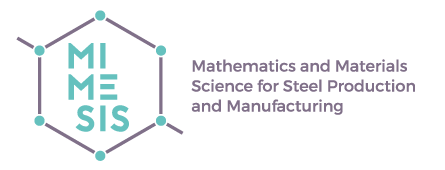Prerana Das
Country of origin
India
Background
MSc. in Computational Engineering , Ruhr Universität Bochum, Germany ,2015
B.E. Mechanical Engineering India, 2013
Industrial partner
EFD Induction, Norway
Academic Partner
WIAS/TU Berlin, Germany
Brief description of the research topic (ESR 1)
The aim of my PhD project is to develop a simulation and optimization tool of the High Frequency Electrical Resistance Welding (HF-ERW) of steel tubes. The uniqueness of the MIMESIS program is that I carry out research in academia and industry. My project is a multi-field problem with the integration of computational mechanics, materials science and electromagnetics. At EFD, which is a manufacturer of High Frequency welding machines, I am able to understand the state of the art process of HF-ERW of steel tubes and the scope of improvement of the process. At Weierstrass Institute, I will use this knowledge to develop the mathematical model of steel tube welding and implement it as a computational tool.
Industrial partner EFD Induction, Norway
Academic partner
WIAS/TU Berlin, Germany
Brief description of the research topic (ESR 2)
Induction hardening is an advanced method for heat treatment of steel-made mechanical workpieces which increases the hardness of the boundary layers via a fast heating/fast quenching scheme. Since the heat is generated directly into the workpiece, such a process is also highly energy-efficient. The complex interplay between nonlinear behavior of the workpiece material and its various geometrical aspects , together with the shape of the induction coil is a challenging process to control and model. Our project aims at developing a more detailed nonlinear electro-thermo-magneto-mechanical model of the hardening process, as to simulate, validate and optimize the operative parameters which lead to high-quality hardening for bevel gears geometries.
Vahid Javaheri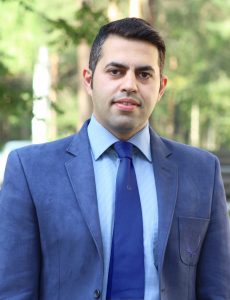
Country of origin
Iran
Background
MSc in Material Science and Engineering, Iran University of Industries & Mines (IUIM), Tehran 2012
BSc in Material Science and Engineering, Bahonar University of Kerman, Iran, 2007
Previous experiences
Manager of Research and Development Unit at Isfahan Casting Industries (I.C.I), 2009-2015
Industrial partner
EFD Induction, Norway
Academic partner
University of Oulu, Finland
Brief description of the research topic (ESR 3)
Steel tubes with very high hardness on the inner surface are industrially very important in applications for slurry transportation in the construction, oil, gas, and mining industries. In the case of the present innovative sequence of processes to manufacture ultra hard wear pipes, the first step is to produce raw pipes by high frequency induction welding of a hardenable but initially ductile steel strip. Immediately after welding, the brittle martensite formed in the weld heat affected zone will be heat treated using induction heating to recover the ductility. In addition, to have a comprehensive knowledge of process, modelling and simulation in order to study the effect of different variants and optimization of process should be taken in to consideration.
Satish Kumar Kolli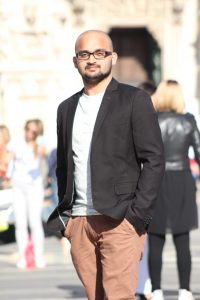
Country of origin
India
Background
Master in Metallurgical and Materials Engineering at Indian Institute of Technology Roorkee, India, 2015
DAAD Exchange student, RWTH Aachen University, Germany, 2015
Industrial partner
Outokumpu Stainless steels, Tornio, Finland
Academic partner
University of Oulu, Finland
Brief description of the research topic (ESR 4)
The sensitization phenomenon is a common cause of failures in applications involving stainless steels.While the phenomenon is well understood qualitatively, there are no verified general quantitative models to predict its occurrence for an arbitrary chemical composition and thermal treatment. This work package will provide a verified model for sensitisation resulting from the steel-making stage. It is also expected that the model will form a good basis for predicting sensitisation occurring in manufacturing and use. The quantitative prediction of chromium depletion profiles for general thermal cycles, and the establishment of quantitative metrics to describe the critical concentration profile leading to failure in sensitisation tests constitute the scientific novelty of this work package.
Eshwar Kumar Ramasetti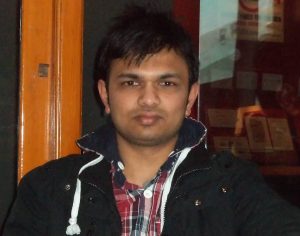
Country of origin
India
Background
Master in Mechanical Engineering, Manchester University, UK, 2013
Master thesis at Helmholtz-Zentrum Dresden-Rossendorf, Germany, 2013
Previous experiences
Research Engineer in Fluid Mechanics/CFD, Germany, 2014-2016
Industrial partner
Outokumpu Stainless steels, Tornio, Finland
Academic partner
University of Oulu, Finland
Brief description of the research topic (ESR 5)
This doctoral thesis is aimed to develop Computational Fluid Dynamics (CFD) models to study the transport phenomena and reactions in ladle processes.The specific aim of this study is to reduce the consumption of nickel as an alloying element and optimize alloying practice. While employing bottom stirring, small amounts of nickel are added into the stainless steel melts. After a certain time the melt is considered to be homogenized and a sample is taken. However, if complete mixing is not attained, the sample is not representative for the overall composition of the whole batch. The alloying additions are also a source for inclusions, which will determine the quality of steel. A better understanding of the underlying fluid dynamics can be obtained by employing CFD-based tools and the treatment times cane be optimized with respect to the employed alloying practice.
Najib Alia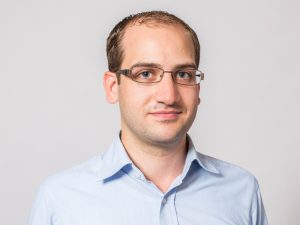
Country of origin
France
Background
Master in Structural Dynamics, Ecole Centrale Paris, France, 2014
Master in Mechanical Engineering, Supmeca Paris , France, 2013
Previous experiences
Process Engineer at Saint-Gobain Isover, Germany, 2015
Industrial partner
SSAB, Ruukki plant, Raahe, Finland
Academic partner
WIAS/FU Berlin, Germany
Brief description of the research topic (ESR 6)
In order to produce high performance steel, the steelmakers use vacuum tank degassers to purify liquid steel from impurities. This operation needs to be controlled effectively to ensure higher cost-efficieny and better quality management. The objective of the project is to control the process through the vibration measured on the tank wall. We first focus on modeling and simulating the turbulent multiphase flow happening inside the tank during the operation.Then, we simulate the vibration of the structure induced by this flow. Experiments will be carried out to validate the models and to derive a steel quality index based on vibration measurements, process parameters and simulations.
Manuel J. Arenas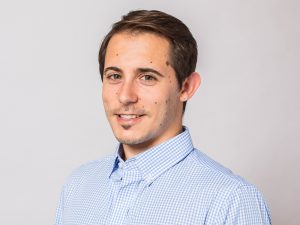
Country of origin
Spain
Background
Bachelor in Mathematics, University of Sevilla, Spain, 2012
Master in Industrial Mathematics, University of Santiago de Compostela, Spain,2015
Previous experiences
ITMATI (Technological Institute for Industrial Mathematics), Santiago de Compostela, Spain, 2014-2015
Industrial partner
SSAB, Ruukki plant, Raahe, Finland
Academic partner
WIAS/TU Berlin, Germany
Brief description of the research topic (ESR 7)
Steel plates must be delivered in certain dimesions. One way to shape the steel plates is thermal cutting. Different methods are used such as: plasma cutting, laser cutting or flame cutting. Workpackage 7 will be focused on the latest which is the most suitable method for the width of the plates handled by the company. Despite the advantages of flame cutting, some side effects can be seen in the cutting edge (existence of cracks after process has finished) which occur due to diverse causes like solid phase changes and residual stresses. The main objective of the project is to avoid these irregularities with pre- and post-induction heating and optimize the process.
Shashank Ramesh Babu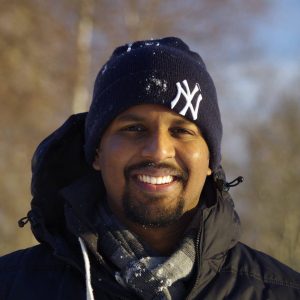
Country of origin
India
Background
MSc. in Material Science and Simulation, Ruhr Universität Bochum, Germany ,2015
Industrial partner
SSAB, Ruukki plant, Raahe, Finland
Academic partner
University of Oulu, Finland
Brief description of the research topic (ESR 8)
My topic is on “Modelling of martensite and retained austenite during quenching after reheating or thermo-mechanical rolling“. Structural applications demand high-strength, economical and energy-efficient materials. High strength steels with tensile strength ≤ 1100 MPa serves this purpose. Martensite being a high strength phase forms the basis for these steels. Retained austenite control is of interest for improving toughness. Utilising various modelling tools and experimental equipment, my work will help in providing models which would predict the properties of the high strength steels. I will be working with SSAB Europe Oy and the University of Oulu in this regard.
